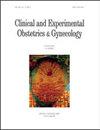Impact of the COVID-19 pandemic on the policies and practices of delivery facilities in Japan
IF 0.6
4区 医学
Q4 OBSTETRICS & GYNECOLOGY
引用次数: 1
Abstract
Background: To clarify the impact of the COVID-19 pandemic on the policies and practices of delivery facilities in Japan from April 2020 to March 2021. Methods: We conducted an online survey of midwives working in obstetric wards nationwide between May 15, 2021, and July 31, 2021. We analyzed the 376 valid responses. Results: With the COVID-19 pandemic, most facilities have barred or partially restricted families and other visitors from being present (patient companions) in outpatient clinics, prenatal classes, during delivery, inpatient care, and inpatient visits. These changes were implemented nationwide, regardless of regional differences in the pandemic state of COVID-19. Meanwhile, by facility classification, prenatal classes, companion at birth, and inpatient visits were more likely to be canceled at perinatal centers than at clinics. The acceptance of “satogaeri deliveries” (a custom in Japan where pregnant women return to their natal homes for labor and childbirth) was partially restricted to about 40% of facilities, although this rate was lower in the four Kanto prefectures (Tokyo, Kanagawa, Saitama, and Chiba). Conclusions: With the COVID-19 pandemic, the differences in Japan’s policies and practices of delivery facilities were attributed more to the role played by facilities in the regional perinatal system than to regional pandemic status. © 2022 S.O.G. CANADA Inc.. All rights reserved.COVID-19大流行对日本配送设施政策和做法的影响
背景:阐明新冠肺炎疫情对2020年4月至2021年3月日本配送设施政策和做法的影响。方法:我们对2021年5月15日至2021年7月31日期间在全国产科病房工作的助产士进行了在线调查。我们分析了376份有效回复。结果:随着新冠肺炎大流行,大多数设施禁止或部分限制家属和其他访客(患者同伴)在门诊、产前课程、分娩期间、住院护理和住院就诊。无论新冠肺炎大流行状态的地区差异如何,这些变化都在全国范围内实施。同时,根据设施分类,围产期中心比诊所更有可能取消产前课程、分娩时陪伴和住院就诊。接受“satogaeri分娩”(日本的一种习俗,孕妇返回分娩之家分娩)的人数部分限制在约40%的设施内,尽管这一比例在关东四个县(东京、神奈川、埼玉和千叶)较低。结论:随着新冠肺炎大流行,日本分娩设施政策和实践的差异更多地归因于设施在区域围产期系统中所起的作用,而不是区域大流行状况。©2022 S.O.G.加拿大股份有限公司。保留所有权利。
本文章由计算机程序翻译,如有差异,请以英文原文为准。
求助全文
约1分钟内获得全文
求助全文
来源期刊
CiteScore
0.50
自引率
0.00%
发文量
241
审稿时长
1 months
期刊介绍:
CEOG is an international, peer-reviewed, open access journal. CEOG covers all aspects of Obstetrics and Gynecology, including obstetrics, prenatal diagnosis, maternal-fetal medicine, perinatology, general gynecology, gynecologic oncology, uro-gynecology, reproductive medicine, infertility, reproductive endocrinology, sexual medicine. All submissions of cutting-edge advances of medical research in the area of women''s health worldwide are encouraged.

 求助内容:
求助内容: 应助结果提醒方式:
应助结果提醒方式:


